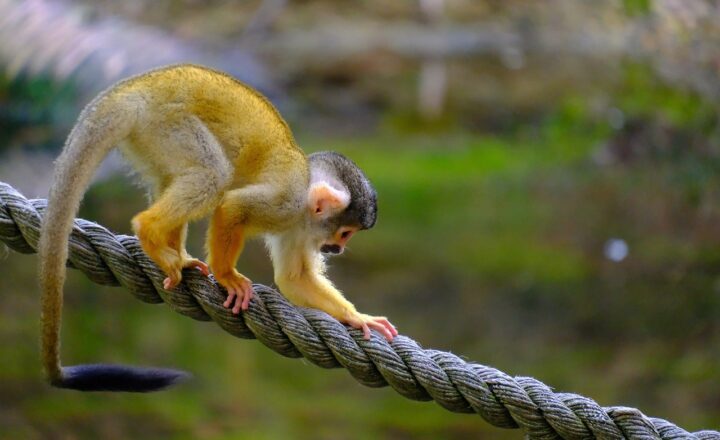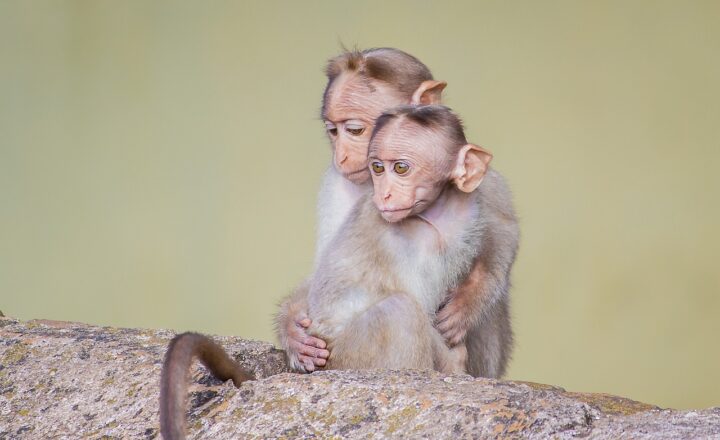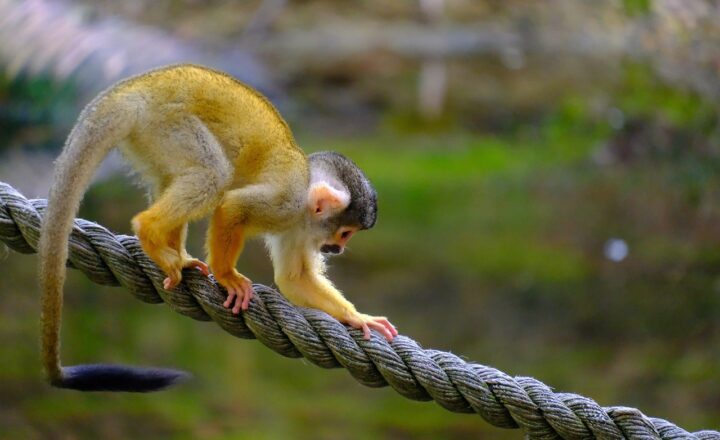The Intelligence of Monkeys: How Problem Solving and Social Skills Shaped Primates
November 14, 2024

Monkeys are often celebrated for their agility, playful nature, and social behaviors, but did you know that these traits are deeply tied to their intelligence? As primates, monkeys exhibit a unique form of intelligence that sets them apart from other species, particularly through their exceptional problem-solving abilities and intricate social structures. This article delves into how these aspects have shaped the intelligence of monkeys, the evolutionary advantages they provide, and what we can learn from these fascinating creatures.
1. Understanding Primate Intelligence
To appreciate monkey intelligence, we must first understand the broader category of primate intelligence. Research indicates that intelligence among primates is not uniform; rather, it varies widely between species. Monkeys, part of the primate family, display cognitive abilities that allow them to adapt, survive, and interact with their environments in complex ways.
Key indicators of intelligence in monkeys include:
- Tool Use: Certain species, such as capuchin monkeys, have demonstrated the ability to use tools for various tasks, from cracking nuts to accessing hidden food sources.
- Problem Solving: Monkeys excel in solving puzzles and overcoming obstacles in their habitat, showcasing their cognitive prowess in real-time situations.
- Social Learning: Monkeys often learn from their peers, adapting behaviors that lead to improved survival, thus demonstrating a level of cultural transmission within groups.
These traits signify that monkey intelligence is not merely instinctual but learned and adapted through experience and interaction.
2. The Role of Problem Solving in Monkey Intelligence
Problem solving is a significant facet of intelligence in monkeys, impacting their survival and success. This ability manifests in various behaviors, including:
2.1 Tool Use
Certain species, such as the Capuchins, are known for their toolmaking abilities. These monkeys can select appropriate stones or sticks to help them accomplish tasks like cracking open nuts or digging for tubers.
Observation studies in jungles have shown these monkeys adapting their tool use based on availability and need, reflecting a level of foresight and planning that is akin to human problem-solving processes.
2.2 Abstract Thinking
Monkeys can engage in abstract thinking—a cognitive ability that enables them to solve complex puzzles that go beyond trial-and-error methods. For example, when tasked with opening a box that requires multiple steps, monkeys can strategize and execute their plan efficiently.
A study conducted at the University of Kyoto found that monkeys could understand the concept of quantity and use that knowledge to solve numerical puzzles, further underlining their problem-solving capabilities.
3. Social Skills and Their Impact on Intelligence
The social lives of monkeys are rich and complex, and their intelligence is deeply intertwined with their social structures. Monkeys live in groups that rely heavily on social interaction to maintain harmony and ensure survival.
3.1 Social Learning
Monkeys exhibit a pronounced ability to learn socially, where younger monkeys learn vital skills from older peers, enhancing their chances of survival. For example, young macaques often learn foraging tactics from their mothers, improving their foraging efficiency. Social learning creates a generational transfer of knowledge, enabling groups to adapt to changes in their environment more effectively.
3.2 Communication Skills
Communication among monkeys is vital for group dynamics. Vocalizations, facial expressions, and body language play essential roles in conveying information. This form of communication enhances their ability to solve problems collaboratively, coordinate during foraging, and warn each other about predators.
Research has indicated that some species have specific calls that relate to certain threats (e.g., calls for aerial predators differ from those for terrestrial threats), showcasing an advanced level of communication that speaks to their intelligence.
4. The Evolution of Monkey Intelligence
The intelligence of monkeys has evolved over millions of years, driven by survival needs and environmental pressures. Understanding this evolutionary context provides insights into the features of monkey intelligence today.
4.1 Environmental Adaptations
As monkeys evolved, their intelligence adapted to address the varied environments they inhabit. For instance, those living in dense rainforests develop sharper problem-solving skills to navigate complex terrains in search of food, while those in savannas may focus more on social structures to protect against predators. This adaptation signifies an intelligent response to environmental challenges.
4.2 Cognitive Evolution
Studies suggest that as monkeys faced increasing social complexity, their brains adapted to allow for enhanced cognitive functions. Larger brain sizes relative to body mass, particularly in social species, point to a correlation between social living and intelligence. Enhanced cognitive abilities allow for better social interaction, resource management, and survival strategies over generations.
5. The Importance of Protecting Monkey Intelligence
Understanding monkey intelligence begs the question of how we can protect these intelligent creatures and their habitats. Monkeys are facing numerous threats, including deforestation, hunting, and habitat loss due to urbanization and agriculture. Here’s why protecting their intelligence is crucial:
- Ecological Balance: Monkeys play pivotal roles in their ecosystems, helping to disperse seeds and maintain forest health. Their intelligence allows for complex ecological interactions, and their loss threatens biodiversity.
- Conservation of Culture: Many monkeys exhibit cultural behaviors learned through social interaction. The extinction of these monkeys would mean the loss of unique knowledge and social practices passed down through generations.
- Scientific Insight: Studying monkey intelligence can provide valuable insights into human evolution, cognition, and social behaviors, thereby aiding in our understanding of our own species.
Preserving monkey populations and their habitats not only protects their intelligence but also enhances our understanding of life’s complexity.
Conclusion
The intelligence of monkeys is a testament to their adaptability, problem-solving abilities, and social intricacies. By studying these remarkable creatures, we grasp the profound connections between cognition, environment, and social structures. As we face ongoing challenges in preserving their habitats and ecosystems, it is our responsibility to ensure that this fascinating aspect of primate life persists for generations to come. Whether engaging in tool use, mastering complex problem-solving tasks, or developing rich social lives, monkeys illustrate that intelligence is multifaceted and deeply intertwined with the natural world.
In conclusion, understanding the intelligence of monkeys not only reshapes our perceptions of their capabilities but also emphasizes the importance of conservation efforts that ensure their survival. By valuing their intelligence and the lessons they offer, we take crucial steps toward preserving not just their lives but the ecosystems that nurture our shared existence.








